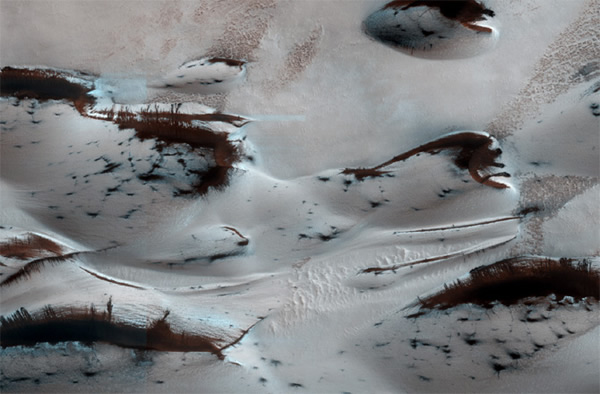Martian Spring Thaws Frigid Sand Dunes
Mars' northernmost sand dunes show signs of thawing as the northern hemisphere of the red planet enters spring. Click here for a wider view of the thawing dune field.
As winter descends on Mars' southern hemisphere, forming tell-tail frost in the lengthening shadows, the opposite is true in the northern hemisphere -- spring has sprung and the northernmost dunes are beginning to thaw.
In this stunning orbital shot, captured by the High-Resolution Imaging Science Experiment (HiRISE) camera on board NASA's Mars Reconnaissance Orbiter (MRO) on Jan. 16, the carbon dioxide-encrusted Martian surface is shown in vivid detail.
With surface temperatures that plummet to as low as −153 degrees Celsius (−243 degrees Fahrenheit) at the poles, carbon dioxide from Mars' thin atmosphere freezes and forms an icy crust (we are familiar with frozen carbon dioxide as "dry ice"). But as the sun begins to rise higher and higher above the horizon during spring, the weak sunlight is enough to thaw the ice, causing it to sublimate back into the atmosphere.
This is Mars' annual cycle and HiRISE monitors surface features such as Mars' numerous dune fields to better understand the seasonal processes at work. In this particular observation, the bright layer of ice is retreating, exposing dark rusty hues of Martian regolith on the south-facing dune slopes.
The splotchy dark features are areas where sand has become dislodged as the ice has sublimated, sending a miniature avalanche of material down the slopes.
Far from Mars being geologically "dead", as HiRISE once again proves, seasonal processes and aeolian (wind-formed) features continue to be shaped by the Martian dynamic atmosphere and climate.(Mar 7, 2014 06:00 AM ET // by Ian O'Neill)












